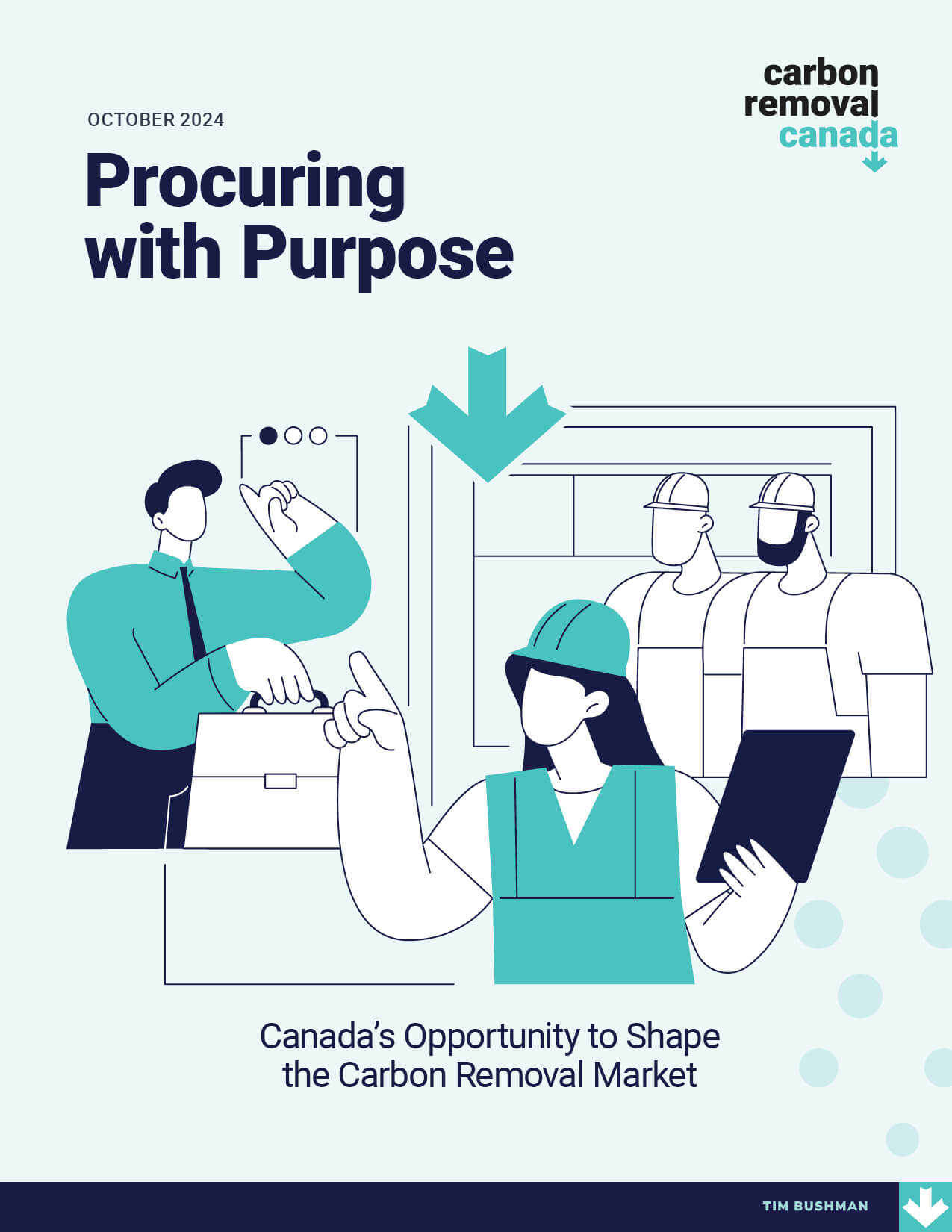April was a big month for carbon removal in Canada.
Buried in a footnote on page 393 of Canada’s just-released federal budget is an opening for carbon removal that could be a game changer, both domestically and internationally.
Early last month, the government released its update to the Greening Government Strategy — essentially a roadmap on how the government — like every other actor — needs to get to net-zero by 2050. The recently updated strategy sets two important targets relevant to carbon removal.
First, by 2050, up to 10% of emissions associated with the government’s vehicles and building emissions can be counterbalanced with carbon removal to achieve net-zero emissions.
Second, by 2040, the government’s national safety and security fleet needs to halve the emissions intensity from its operations, and carbon removal, alongside sustainable aviation fuels, can be used to get there. Applying carbon removal to even a portion of these emissions could be huge — aviation, marine, and other safety and security vessels emitted approximately 846,000 tonnes of CO2 last year.
These distinct carbon removal targets can be a powerful demand signal, but their impact is limited without corresponding funding.

Fast forward to Budget Day two weeks ago. Buried in a footnote — the budget expanded the eligibility of an existing $135M fund, used previously to procure sustainable fuels for Canada’s national safety and security fleet, to include the procurement of carbon removal services. Government departments that want to reduce aviation or marine emissions can now use this fund to pay for permanent carbon removal to get there. This means we have a government strategy with a clear purpose for how carbon removal can be used to achieve their net-zero targets and a sizable, multi-year pot of funding to help pay for it.
This past year, we asked carbon removal companies what would be the most impactful policy to help them build and scale their technology. The answer was almost unanimous: government procurement. They told us that research and development grants are great, but “customers are better.” The government, a credible and credit-worthy customer, can bolster corporate customer acquisition in the carbon removal sector. Its endorsement encourages greater corporate participation and provides financial validation for companies seeking investment capital to scale. In this way, government procurement has a powerful catalytic effect.

Courtesy of Canadian Wollastonite
So what’s next? The Government has a strategy, a target and a pool of funds. They now have an opportunity to turn all of that into a truly impactful carbon removal procurement program. Carbon Removal Canada’s Director of Policy and Research, Tim Bushman, shared some ideas on what an effective procurement program could look like earlier this year. A successful program should include diverse carbon removal methods, establish a clear, standards-based project selection process, and commit to providing transparent information for the wider community’s benefit. We plan to engage actors across Canada’s ecosystem to survey how a program like this could be even more impactful. Ideally, a well-run program could inspire similar efforts globally, further multiplying its impact.
Looking back at the steps taken this past month, it’s clear that Canada is not just participating in the global climate effort but finding ways to lead. The updates to the federal budget and strategic initiatives for carbon removal position Canada at the forefront of environmental innovation; now, it’s all about developing the most effective program possible. Moving forward, our focus is on helping the government implement these plans and ensuring that the benefits of carbon removal are accessible to everyone.
We’re excited to help shape what a world-leading procurement program could look like and will have more to share in the coming weeks. If you have any ideas or perspectives to contribute, please don’t hesitate to contact us.







